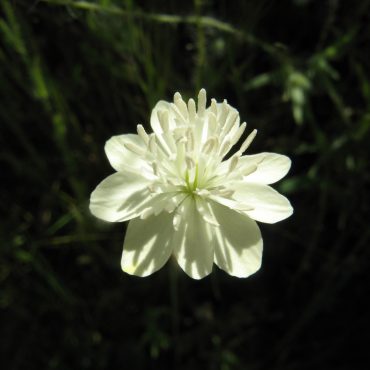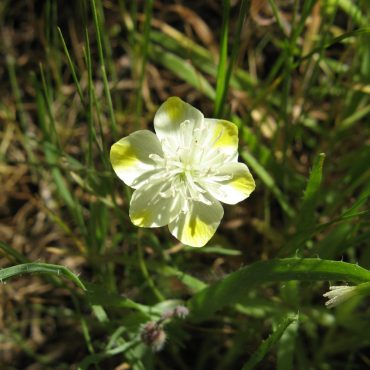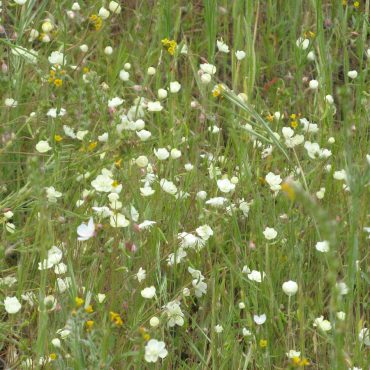Cream cups (Platystemon californicus) are charming little spring flowers that signal Spring in the Reserve. For the past ten years, they have been largely restricted to one small grassy area along the south side trail in the Central Basin. Unfortunately, as of 2015, this field is eroding from below and being overrun with non-native grasses and nasturtium. It is unclear how much longer our cream cups will persist.
Cream Cups
Platystemon californicus
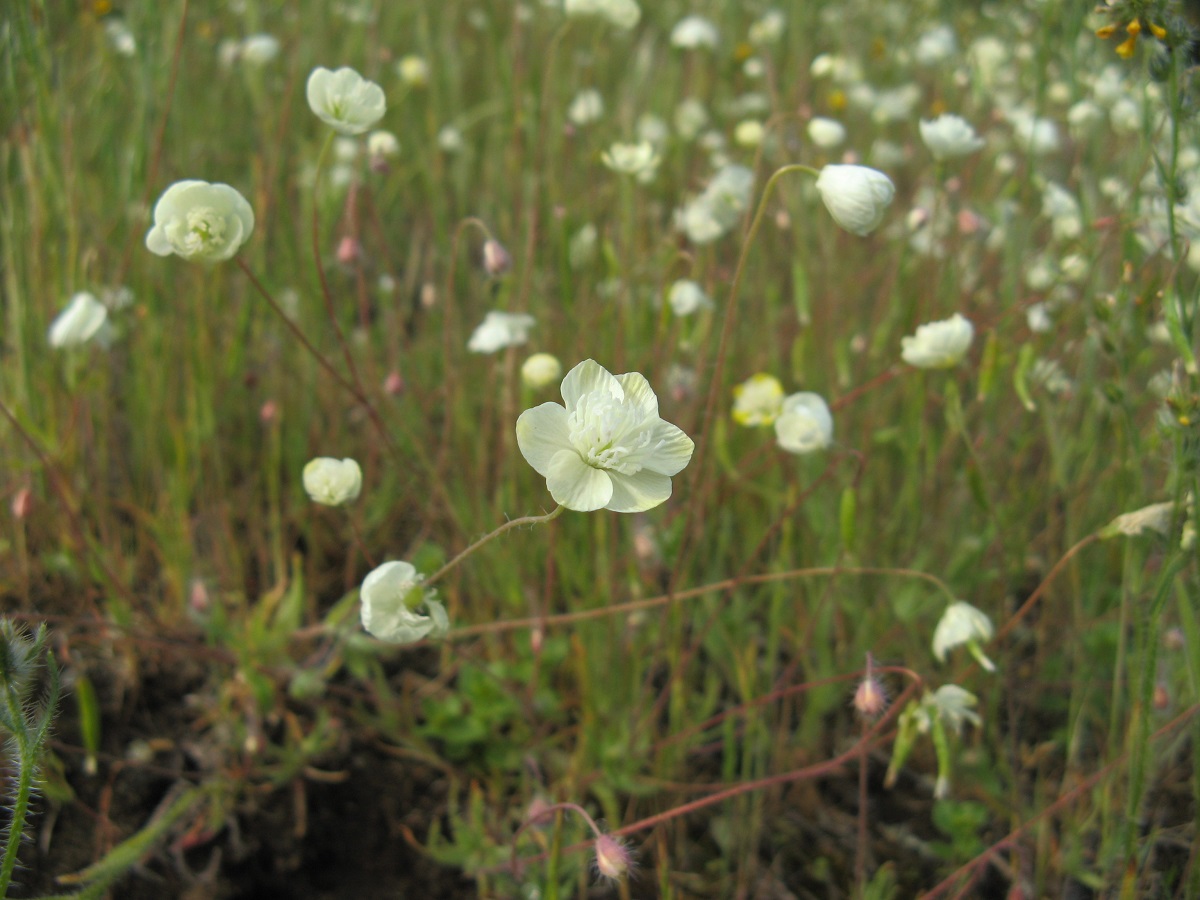
Other Common Names:
California cream cups, creamcups
Description 4,11,26,59,81
Cream cups is a low growing annual plant that has several branching, upright or sprawling stems from the base. It is usually less than ten inches (30 cm) tall. Leaves are cauline, and primarily located near the base of the plant. They are lanceolate to linear, with smooth margin. Leaves are sessile, alternate below becoming opposite or whirled above. All parts of the plant have long hairs that vary from soft to stiff.
Charming little flowers are born singly at the ends of hairy pedicels up to ten inches (25 cm) long. Flowers are bisexual and radially symmetrical, about 1/2 inch (1.5 cm) across. There are three hairy sepals surrounding the nodding bud; these fall off as as flower opens and becomes erect. Six to eight overlapping petals form a shallow dish. Petals may be all white, white and yellow or, less commonly, all yellow. In other areas, they may be pink. Numerous creamy white stamens are free and ascending on flattened filaments of unequal lengths. Pollen is white. There is one pistil; the ovary is cylindrical with ribs that may be spiraled; there are no styles and 15-16 linear stigmas. The major bloom time in the Reserve is March to May.1
The fruit is a dry, ribbed, elongate capsule that splits lengthwise into strips while still attached to the plant. After falling, each strip breaks horizontally into one-seeded pieces.

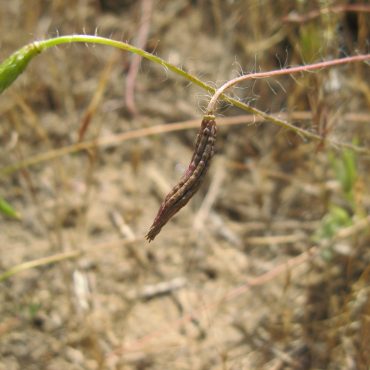
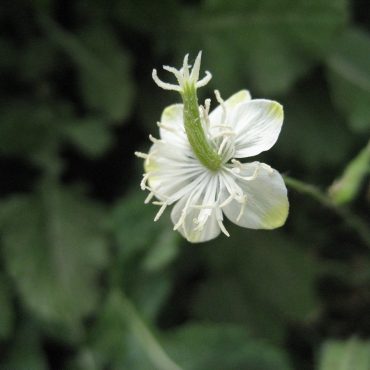
Distribution 2,7,67,89
Cream cups are native to Utah and California, including the Channel Islands, and to parts of Oregon, Arizona and Baja California. In California it is primarily coastal, but it is also found sporadically in the Central Valley, especially in the eastern foothills. It is associated with grasslands and openings in oak woodlands. chaparral and sage scrub, below 6000 feet (1800 m). Formerly, cream cups were more widely distributed in open fields, especially after fires; unfortunately, they have been crowded out by non-native plants such as annual grasses, star thistle and mustard.59,169
In the Reserve, cream cups are found mainly in one small grassy area about three feet (1 m) above the trail just east of the Rios trailhead. Unfortunately, this little field is threatened by erosion from the trail side from off trail human impacts, by an invasion of nasturtium from the hills to the south and by competition from non-native annual grasses. Without intervention, it is unclear how much longer our small cream cup population will persist.
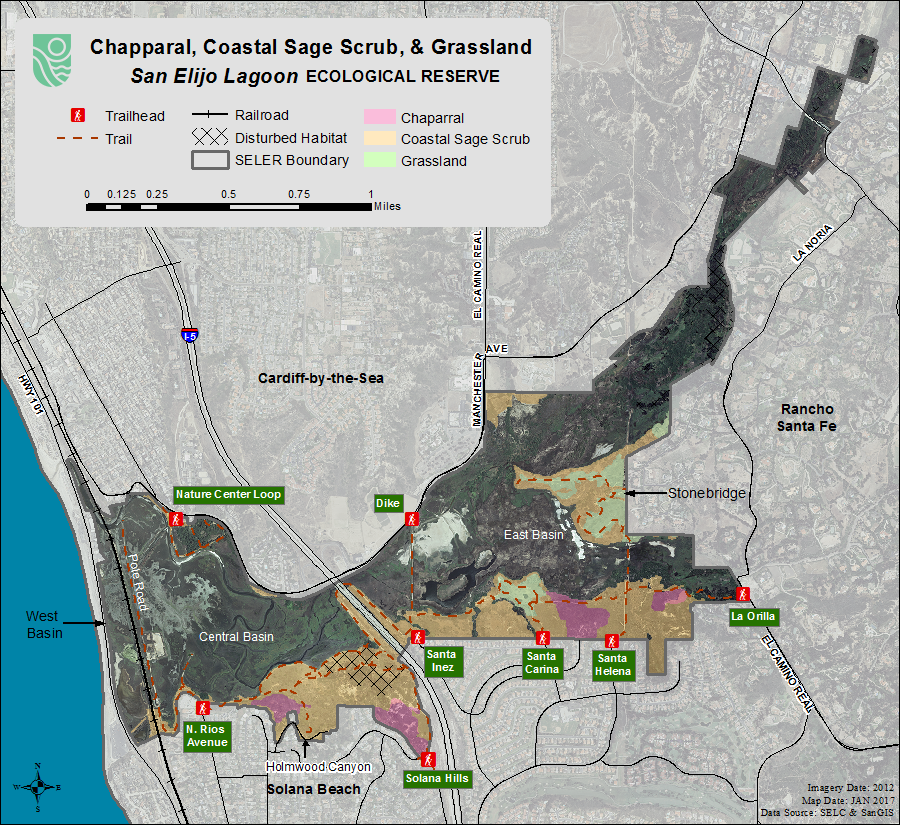
Classification 2,44,59,71
Cream cups are dicot angiosperms in the poppy family (Papaveraceae). Plants in this family often have flowers with milky sap, four or six conspicuous petals, half as many sepals and numerous stamens. This family includes several popular garden flowers as well as the opium poppy, which is the source of culinary poppy seeds and several well-known narcotics.
There are four other species of poppy reported from the Reserve. The most common are California poppy (Eschscholzia californica) and wind poppy (Papaver heterophyllum).48
There is only one species in the genus Platystemon. It is distinguished from other poppies by the nodding bud on a hairy pedicel and by the fruit which breaks into horizontal units after splitting longitudinally.4
Alternate Scientific Names:
Platystemon arizonicus, Platystemon confinis, Platystemon mohavensis, Platystemon crinitus
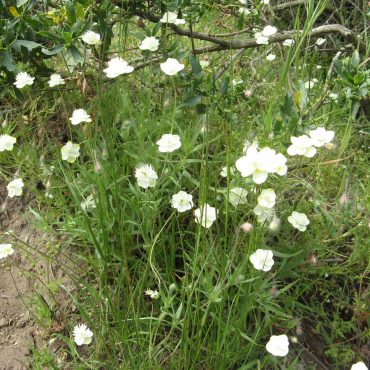
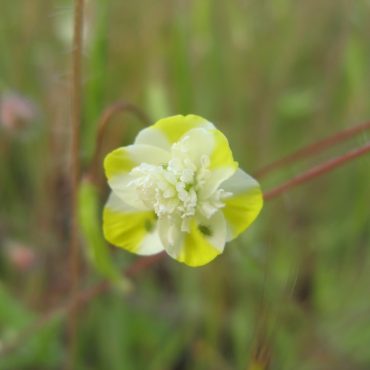
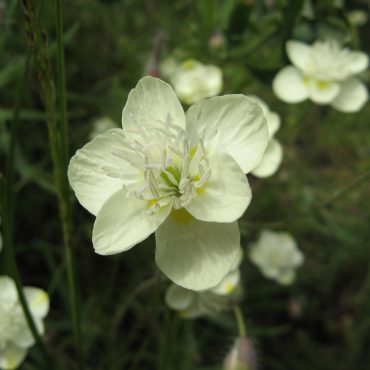
Ecology
Flower structure and bloom development is often interpreted as a means of enhancing cross-pollination. The fertilization of a seed by two different parents (cross-pollination) aids genetic variability and, ultimately, the adaptability of the population to change.
Mechanisms to promote cross-pollination includes physical separation of male and female reproductive structures, (e.g. wild cucumber, Marah macrocarpa, California sun cup, Camissoniopsis bistorta) or sequential timing of maturation of stamens and pistils (e.g. chinese houses, Collinsia heterophylla, pride of Madeira, Echium candicans). The most efficient mechanism for avoiding self-pollination is called “self incompatibility”. This is a molecular process by which a flower “recognizes” its own pollen and subsequently inhibits pollen germination, growth or fertilization. Self incompatibility was first recognized by Darwin and is now thought to be exhibited by about half of the flowering plants and to be responsible for their rapid evolution, diversification and success.41,336
Although not apparent to the casual observer, cream cups are self-incompatible. Solitary bees are effective pollinators, as is the wind, which is an unusual pollen vector for an annual plant.81
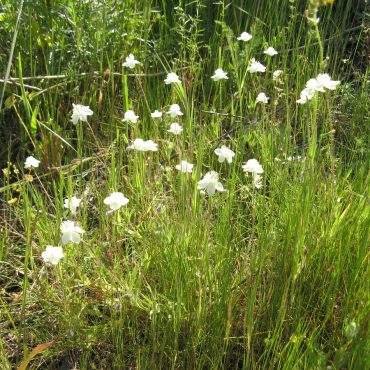
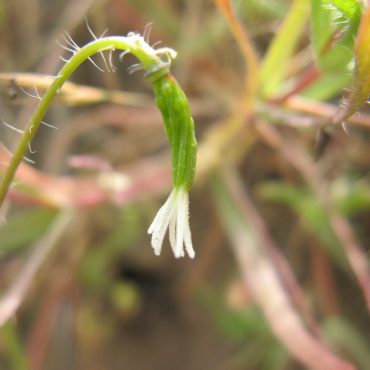
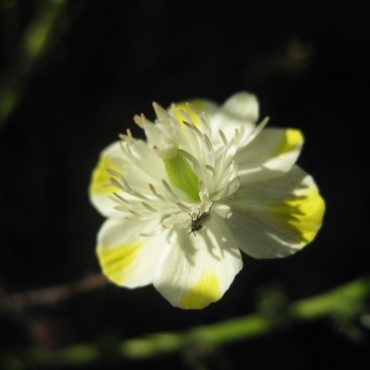
Human Uses
So far we have found only a single record of use by indigenous peoples. The Yuki, who live in north coastal California, (Mendocino County) consumed cream cups for greens.75
Cream cups are sometimes recommended for use in native gardens,24 and the seeds have been added to wildflower seed mixes. However, one nursery warns that the seeds have become quite scarce and costly.169
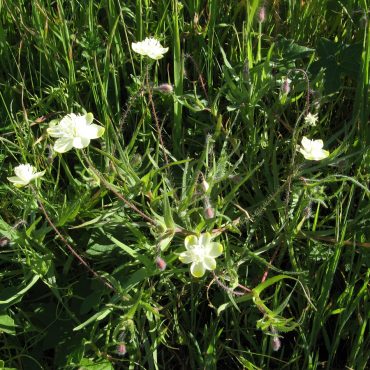
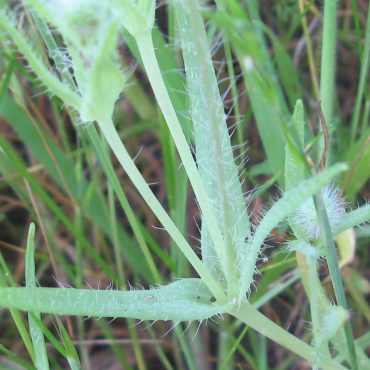
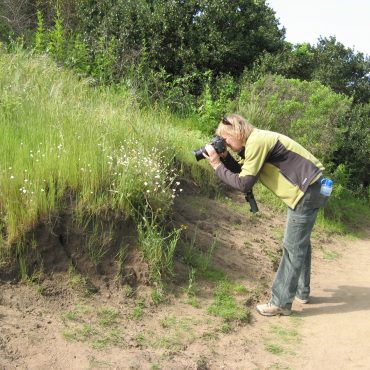
Interesting Facts
Cream cups have an odor that some people find pleasant and others dislike.23
